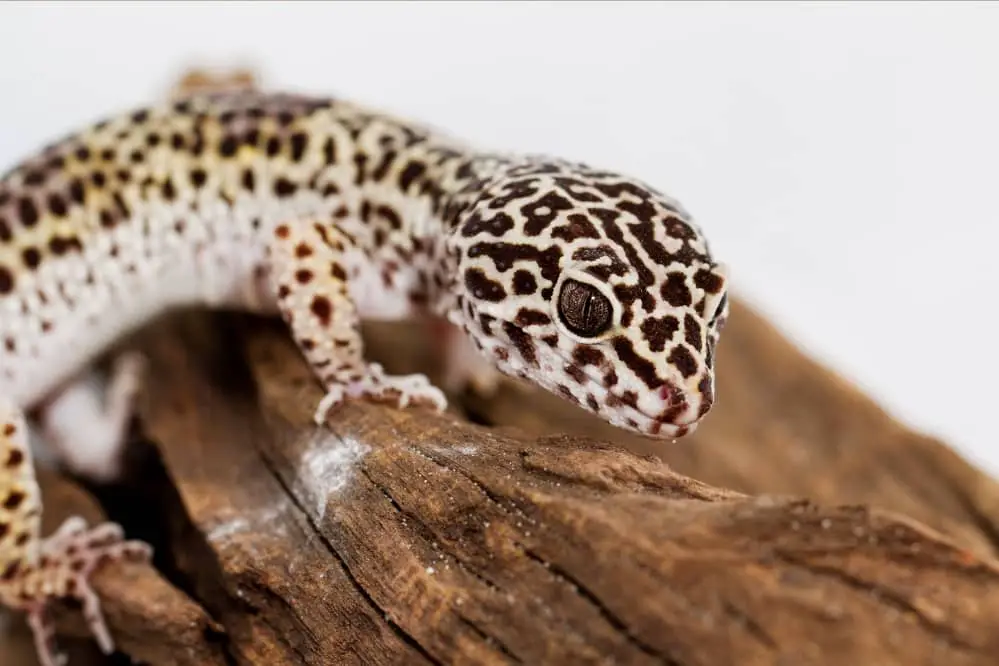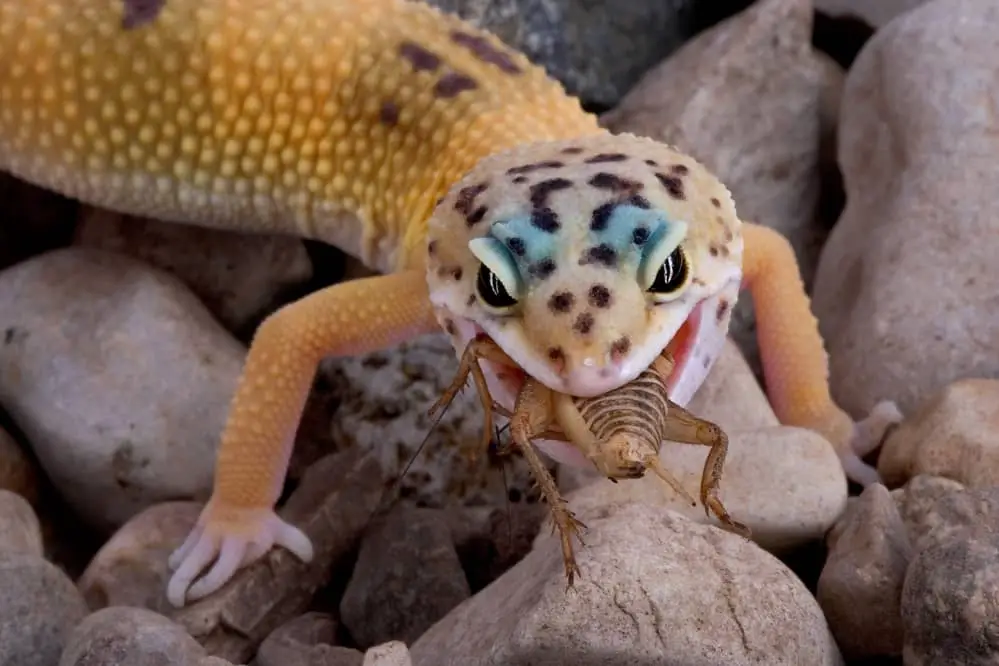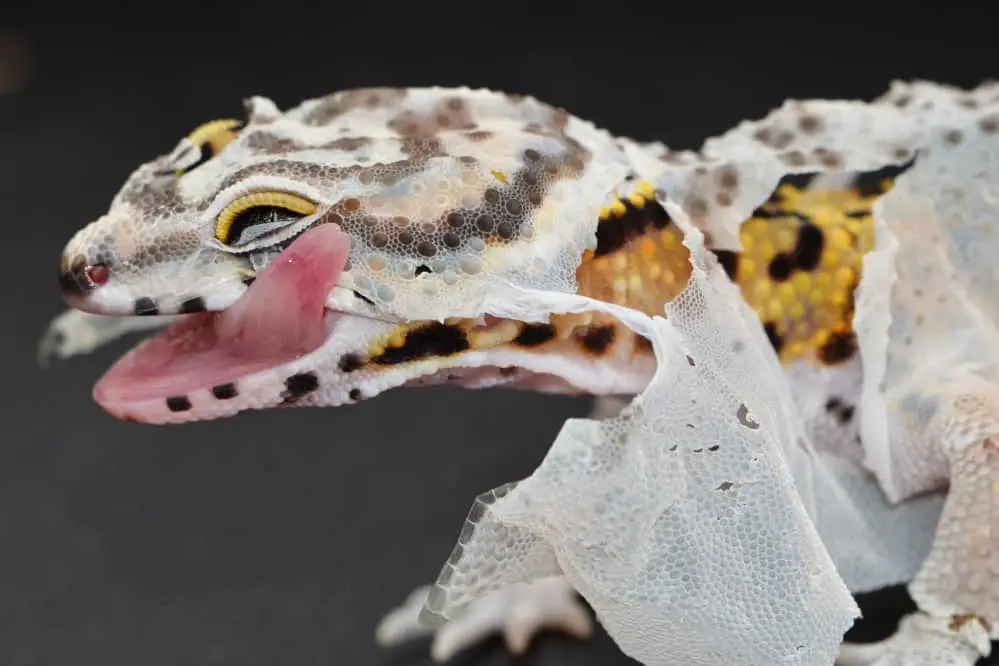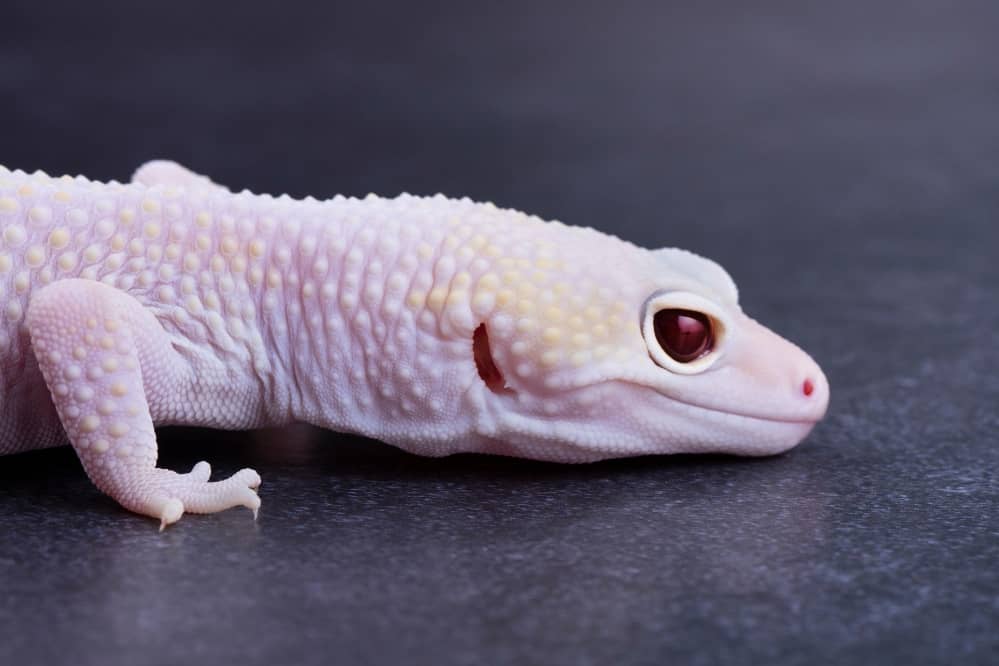Leopard geckos are amazing creatures, and what sets them apart is their vibrant colors. However, leopard geckos can have a pale appearance that might be alarming. When a leopard gecko becomes pale, many owners become concerned.
Leopard geckos normally turn pale during the shedding phase. Aside from shedding, there are a variety of other causes for a leopard gecko’s pale look, including parasites, inappropriate temperature and humidity, environmental stress, illness, and a few others.
If you’re worried about your leopard gecko’s pale appearance and don’t know the reason behind it, this article is for you. Read on to learn everything there is to know about why your leopard gecko is pale.
Why Do Leopard Geckos Become Pale?
Here are 10 reasons why leopard geckos become pale.
1. Shedding
A leopard gecko usually becomes pale when it is getting ready to shed its skin. Leopard geckos are reptiles with small scales covering their bodies to provide protection. When a leopard gecko grows bigger, old scales shed and are replaced with new ones, this process is known as shedding.
A leopard gecko sheds at least once every month when it is young, but as it ages, its growth slows down and it sheds less frequently, usually every few months. As they are preparing to shed old scales or skin, new scales are being formed underneath simultaneously. As the day of shedding approaches, a little space emerges between the old skin and the new skin.

Leopard geckos appear pale because of this little space between the old and new skin. Additionally, old scales and skin don’t receive enough blood and nutrition, thus they become paler and lose their vibrant colors.
Therefore, one of the main causes of leopard geckos’ pale skin is shedding. The pale appearance caused by shedding lasts only a few days, usually up to three, because all of the old and dead skin and scales are replaced by new ones during this time.
2. Illness
Your leopard gecko may become pale if it is ill. Because a sick leopard gecko will decrease its appetite and limit its water consumption. The leopard gecko’s body won’t receive enough nutrition to support bodily functions, and the skin will turn dull. If your leopard gecko has diarrhea, dehydration could also be the cause of its paleness.
3. Enclosure temperature
Leopard geckos may become discolored as a result of excessive heat since it causes the tank to lose moisture. Ideally, you should maintain the tank’s temperature between 25 and 30 degrees Celsius. Also, ensure that the humidity in the tank is between 30 and 40%. To keep the humidity level appropriate, often spray the leopard gecko’s tank with water.
4. Environmental stress
Leopard geckos can experience stress even when the tank’s temperature and humidity are within the optimal range because of substrate and living space. Therefore make sure your leopard gecko has a comfy substrate and an ideal living space.
5. Imbalanced diet

One of the main causes of leopard geckos’ pale coloration is an unbalanced diet. To maintain healthy skin, sufficient amounts of vitamins, minerals, and other micronutrients are absolute must for leopard geckos
6. Freshwater
For leopard geckos, fresh water is essential because it helps the skin stay hydrated and prevents dryness. Water provides nutrients to leopard geckos as well which are critical to their general well-being.
7. Mouth rot and skin infections
Skin infections, particularly bacterial and fungal infections, can cause leopard geckos to become pale. A leopard gecko may appear pale due to mouth rot, but this condition is typically localized to the mouth only.
8. Parasites
Leopard geckos often have pale skin due to parasites, especially mites. There are two causes for this. To start, when mites bite, the skin may become inflamed and discolored. Another factor is that mites are nuisance to leopard geckos. They can cause them to lose their appetite and become restless, which prevents them from consuming adequate nutrients and causes their skin health to deteriorate.
9. Egg binding
Egg binding is a condition that many creatures, including leopard geckos, experience. A leopard gecko cannot lay eggs while suffering from this illness, which can be quite painful for the animal. Leopard geckos’ skin might turn pale during this unpleasant and painful state because of stress and malnutrition.
10. Impaction problems
Impaction is another prevalent condition that causes leopard geckos to turn pale. Leopard geckos who have impaction may experience discomfort, agitation, and constipation.
How to Determine Whether a Leopard Gecko’s Paleness Is Not Due to Shedding?

Leopard geckos shed their skin over the course of one to three days, irrespective of their age. A leopard gecko will seem pale during this time till the shedding is finished. If a leopard gecko has been pale for more than three days, is not eating properly, is not defecating, and is behaving weirdly, the cause is not shedding.
How To Prevent Leopard Geckos From Looking Pale
Following are some of the tips that can normalize the coloration of your gecko so it will have vivid colors and healthy skin.
- Give your leopard geckoplenty of clean water
- Ensure that your leopard gecko is well-fed and that supplements are included in it’s diet
- Provide your leopard gecko witha lot of living space
- Regularly clean the terrariumof your leopard gecko and change the substrate
- Make sure there are no mites in the terrarium of your leopard gecko
Summary
Leopard geckos get pale as they prepare to shed their old skin in order to grow larger. The pale coloration caused by shedding will only last two to three days because the shedding process will be finished during this time and new scales with vivid colors will appear.
However, if a leopard gecko looks pale for longer than three days and isn’t also eating, drinking, or defecating normally, the cause of the pale coloration is not shedding.
Other than the shedding, likely reasons for pale coloration in geckos include mites, inappropriate temperature and humidity, an imbalanced diet, and a few others. If your leopard gecko has been pale for longer than a week, take it to a veterinarian for an examination.

